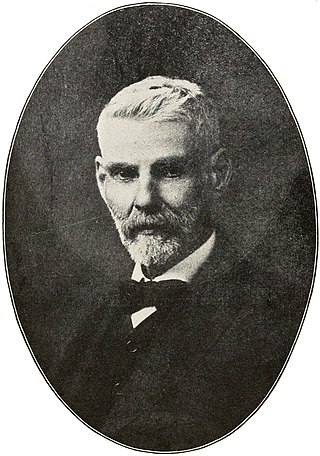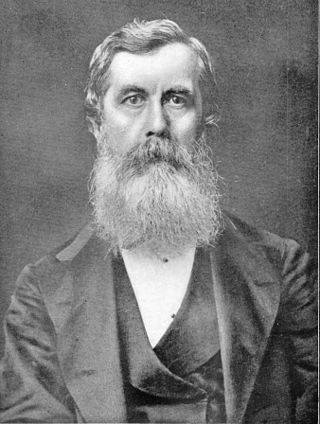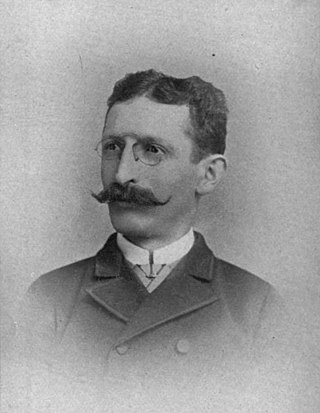
Entomology is the scientific study of insects, a branch of zoology. In the past the term insect was less specific, and historically the definition of entomology would also include the study of animals in other arthropod groups, such as arachnids, myriapods, and crustaceans. This wider meaning may still be encountered in informal use. The field is also referred to as insectology in American English, while in British English insectology implies the study of the relationships between insects and humans.

John Obadiah Westwood was an English entomologist and archaeologist also noted for his artistic talents. He published several illustrated works on insects and antiquities. He was among the first entomologists with an academic position at Oxford University. He was a natural theologian, staunchly anti-Darwinian, and sometimes adopted a quinarian viewpoint. Although he never travelled widely, he described species from around the world on the basis of specimens, especially of the larger, curious, and colourful species, obtained by naturalists and collectors in England.

William Kirby was an English entomologist, an original member of the Linnean Society and a Fellow of the Royal Society, as well as a country rector, so that he was an eminent example of the "parson-naturalist". The four-volume Introduction to Entomology, co-written with William Spence, was widely influential.

Carnegie Museums of Pittsburgh is a nonprofit organization that operates four museums in Pittsburgh, Pennsylvania, United States. The organization is headquartered in the Carnegie Institute and Library complex in the Oakland neighborhood of Pittsburgh. The Carnegie Institute complex, which includes the original museum, recital hall, and library, was added to the National Register of Historic Places on March 30, 1979.

Francis Walker was an English entomologist. He was born in Southgate, London, on 31 July 1809 and died at Wanstead, England on 5 October 1874. He was one of the most prolific authors in entomology, and stirred controversy during his later life as his publications resulted in a huge number of junior synonyms. However, his assiduous work on the collections of the British Museum had great significance.

Augustus Radcliffe Grote was a British entomologist who described over 1,000 species of butterflies and moths. He is best known for his work on North American Noctuidae. A number of species were named after him, including the moth Horama grotei.

William Chapman Hewitson was a British naturalist. A wealthy collector, Hewitson was particularly devoted to Coleoptera (beetles) and Lepidoptera and, also, to birds' nests and eggs. His collection of butterflies, collected by him as well as purchased from travellers throughout the world, was one of the largest and most important of his time. He contributed to and published many works on entomology and ornithology and was an accomplished scientific illustrator.
Barry Bolton is an English myrmecologist, an expert on the classification, systematics, and taxonomy of ants, who long worked at the Natural History Museum, London. He is known especially for monographs on African and Asian ants, and for encyclopaedic global works, including the Identification Guide to Ant Genera (1994), A New General Catalogue of Ants of the World, Synopsis and Classification of Formicidae (2003), and Bolton's Catalogue of Ants of the World: 1758-2005 (2007). Now retired, Bolton is a Fellow of the Royal Entomological Society and Myrmecologist, Biodiversity Division, Department of Entomology, Natural History Museum, London.

Andrey Avinoff was an internationally-known artist, lepidopterist, museum director, professor, bibliophile and iconographer, who served as the director of the Carnegie Museum of Natural History in Pittsburgh from 1926 to 1945.

Herbert Huntingdon Smith or Herbert Huntington Smith was an American naturalist and amateur conchologist who worked on the flora and fauna of Brazil. He wrote Brazil, the Amazons and the coast and Do Rio de Janeiro á Cuyabá: Notas de um naturalista (1922).

Lepidopterology is a branch of entomology concerning the scientific study of moths and the two superfamilies of butterflies. Someone who studies in this field is a lepidopterist or, archaically, an aurelian.

Microcentrum is a genus of phaneropterid katydids, sometimes known as "angle-wing katydids" and found in the Americas.

George Duryea Hulst was an American clergyman, botanist and entomologist.

Frederic Moore FZS was a British entomologist and illustrator. He produced six volumes of Lepidoptera Indica and a catalogue of the birds in the collection of the East India Company.
Mediavia longistriga is a species of snout moth in the genus Mediavia. It was described by Schaus in 1922. It is found from Guatemala to South America.

Ross Taylor Bell was an American entomologist with particular interest in the invertebrate natural history of Vermont, United States, and carabid beetles. Together with his wife, Joyce Rockenbach Bell, his work at the University of Vermont was largely taxonomic, where they described more than 75% of the rhysodine species known to science. Ross also wrote a number of seminal papers in his chosen field.
The New York Entomological Society and other entomological societies in New York have produced a number of scientific journals since the mid-19th century, some of which have moved between a set of similar societies.

Berthold Neumoegen was a German-born American stock-market investor and amateur entomologist who specialized in the Lepidoptera.

Charles Frederic August Schaeffer was an American entomologist who specialized in beetles, particularly chrysomelids and weevils. He described 109 species in 91 genera and some species like Taphrocerus schaefferiNicolay & Weiss were described from his collections and named after him.

Mary Foley Benson was an American scientific illustrator and fine artist. She specialized in detailed, realistic watercolor paintings of plants and insects.















